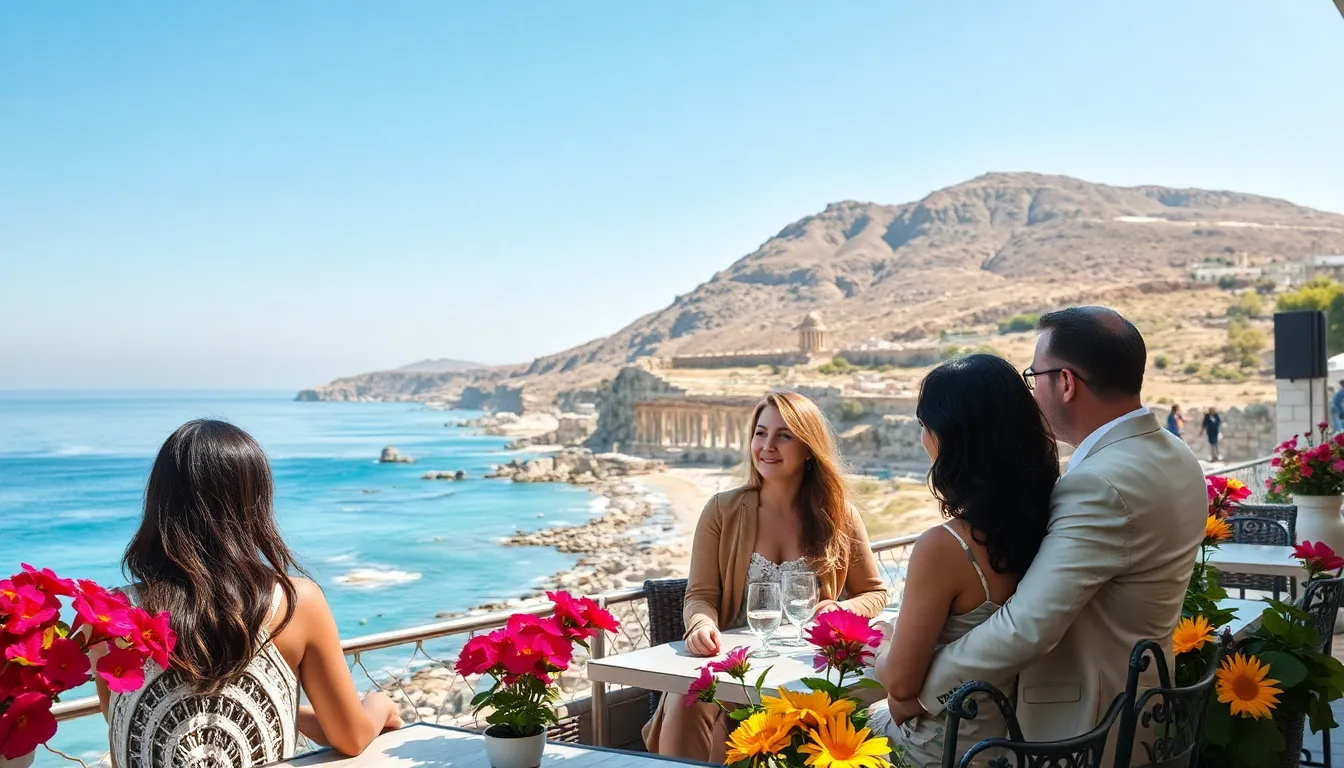Planning a trip to Cyprus? Buckle up, because this Mediterranean gem is more than just sun-soaked beaches and ouzo-fueled sunsets. With its rich history, vibrant culture, and breathtaking landscapes, Cyprus is the perfect blend of adventure and relaxation. Whether you’re a history buff searching for ancient ruins or a sun-seeker wanting to lounge on gorgeous shorelines, Cyprus has something for everyone. So grab a coffee, sit back, and let’s jump into Cyprus travel guides that will transform your next vacation from ordinary to extraordinary.
Table of Contents
ToggleOverview of Cyprus

Cyprus is an island nation located in the eastern Mediterranean, boasting a unique blend of cultures, languages, and landscapes. The third largest island in the Mediterranean, it’s known for its stunning coastal views, mountainous terrains, and archaeological treasures. Visitors looking to explore its vibrant cities like Nicosia, the capital, and Limassol will find bustling markets, delicious local cuisine, and friendly locals. The island’s strategic location has made it a crossroads of civilizations, contributing to its rich tapestry of history. From ancient Greek and Roman ruins to Byzantine churches, Cyprus tells a story of resilience and cultural amalgamation that waits to unfold as you traverse its pathways.
Key Attractions
Cyprus is dotted with countless attractions that cater to every taste and interest. Here’s a whirlwind tour:
The Paphos Archaeological Park
If history ignites a spark within, the Paphos Archaeological Park is a must-visit. This UNESCO World Heritage site features stunning Roman mosaics and ruins that tell tales of a bygone era.
Troodos Mountains
For those who prefer nature, the Troodos Mountains offer scenic hikes and picturesque villages nestled in pine forests. With several trails to choose from, trekkers can witness the island’s natural beauty up close, especially during the wildflower season.
Ayia Napa
Looking for nightlife? Ayia Napa is a famous party hub, renowned for its vibrant atmosphere and picturesque beaches. By day, sunbathe at Nissi Beach: by night, dance till dawn at one of its many nightclubs.
Kyrenia Harbor
Over in Northern Cyprus, Kyrenia Harbor charms visitors with its quaint cafes and historical castle. Strolling along the waterfront with the sound of waves provides a serene getaway from the bustling tourist spots.
Larnaca Salt Lake
Don’t miss the chance to visit Larnaca’s Salt Lake, especially between November and March when flamingos flock to its shores, creating an Instagram-worthy spectacle.
Each of these spots offers a unique slice of Cypriot life and beauty.
Best Time to Visit Cyprus
Timing can be everything when it comes to travel, and Cyprus is no exception. The best time to visit typically falls between April to June and September to October. During these months, travelers can enjoy delightful weather, fewer tourists, and pleasant temperatures averaging between 70°F and 85°F.
Avoiding the Crowds
Visiting in late spring or early autumn not only helps avoid the summer crowd but also allows for a more authentic experience. Many locals will be found at restaurants and markets, giving visitors a taste of true Cypriot hospitality.
Expecting Mixed Weather in Winter
Winter months from December to February are cooler, with temperatures dropping to around 50°F. While you might not hit the beaches quite as often, this is a perfect time to explore cultural sites or enjoy traditional Cypriot comfort food by a cozy hearth.
Getting Around Cyprus
Getting around Cyprus can range from fun road trips to using public transport, depending on what kind of adventure you choose. Here’s a quick rundown:
Renting a Car
Renting a car is often the best option for tourists who wish to explore the island thoroughly. Driving in Cyprus is generally straightforward, with well-maintained roads and clear signage. Plus, having your own wheels gives you the freedom to stop at hidden gems along the way.
Public Transport Options
For those who prefer not to drive, Cyprus offers an extensive public transportation network. Buses connect the major cities, and there are minibus services to more remote areas. Keep in mind, though, buses may not follow a strict schedule, so patience is key.
Exploring on Foot
Don’t underestimate the joy of walking through Cyprus’s charming villages and bustling towns. Many places are pedestrian-friendly, giving travelers an opportunity to discover local shops and eateries at a leisurely pace.
Cultural Insights and Etiquette
Understanding the local culture and etiquette can enhance your travel experience significantly. Here are a few pointers:
Traditional Greetings
When meeting someone, a firm handshake often suffices. Among friends, a hug or kiss on both cheeks is common. It’s always appreciated to use some basic Greek phrases like ‘Kalimera’ (Good Morning) or ‘Efharisto’ (Thank you).
Tipping Practices
Tipping isn’t obligatory, but it’s a common practice. In restaurants, rounding up the bill or leaving a 10% tip is gracious, particularly if the service was excellent.
Dress Code
Although Cyprus is quite relaxed, wearing appropriate attire while visiting churches and monasteries is recommended. Covering shoulders and knees will show respect, especially in religious sites.
Accommodation Options
Cyprus offers a range of accommodation to meet diverse budgets and preferences. Whether you want to splurge or save, here are a few types of lodging options:
Luxury Resorts
For those seeking a touch of elegance, luxury resorts in areas like Limassol and Paphos provide stunning views, world-class dining, and top-notch amenities.
Boutique Hotels
If you prefer something unique, boutique hotels in Nicosia and Larnaca offer personalized service and a charming atmosphere, often reflecting the local culture and style.
Budget-Friendly Hostels
Traveling on a tighter budget? No problem. Hostels scattered across the island cater to backpackers, offering a chance to meet fellow travelers while saving on accommodation costs. Also, look for guesthouses or Airbnb options for a homier feeling.





